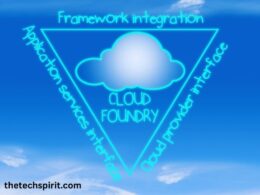Modern Cloud Infrastructure refers to the hardware and software components required to enable cloud computing. It consists of physical and virtual resources that provide scalable and flexible IT services and applications.
Table of Contents
Defining Cloud Infrastructure and Architecture
The key characteristics of cloud infrastructure include:
- On-demand self-service – Users can provision resources as needed without human interaction.
- Broad network access – Resources are available over the network through standard mechanisms.
- Resource pooling – Providers pool computing resources to serve multiple customers.
- Rapid elasticity – Capabilities can scale out and in quickly and automatically.
- Measured service – The usage of resources is monitored and optimized through metering and billing.
The cloud infrastructure relies on a distributed architecture to provide high availability. It consists of multiple data centers with redundant storage, networking, and computing capabilities.
Evolution of Cloud Computing
Cloud computing evolved from earlier models of distributed computing like grid computing, utility computing, and virtualization technology. It began taking shape in the 2000s with the launch of services like Amazon Web Services (AWS).
The global adoption of cloud services has risen dramatically, with the market projected to reach $791 billion by 2028 according to Grand View Research. Enterprises continue to migrate legacy systems to the cloud.
Benefits of Cloud Infrastructure
Some key benefits that cloud infrastructure offers include:
- Agility and faster time to market
- Scalability and elasticity
- Cost efficiency and optimization
- High availability and reliability
- Global reach and access
- Reduced IT maintenance overhead
- Enhanced collaboration capabilities
Components of a Modern Cloud Infrastructure
A typical cloud infrastructure consists of multiple components working together to deliver services.

Compute Resources
The computing foundation of cloud infrastructure includes physical servers, as well as virtual machines (VMs), containers, serverless computing platforms, and more. These provide the processing power for cloud-hosted applications.
Storage Systems
Cloud providers offer object storage, block storage, file storage, and hybrid storage options. Storage resources are distributed across multiple facilities for redundancy and high availability.
Networking
The networking fabric provides intra- and inter-data center connectivity for workloads. Components include routers, switches, gateways, firewalls, load balancers, and more.
Management Tools
Tools for automation, orchestration, monitoring, security, analytics, and more are essential to manage the infrastructure. APIs and dashboards enable self-service and centralized control.
Cloud Deployment Models
There are three main cloud deployment models to choose from:

Public Cloud
Public cloud services are owned and operated by third-party providers like AWS, Azure, or GCP. They are accessible to any customer over the Internet. The public cloud offers maximum flexibility and scalability.
Private Cloud
Private cloud refers to cloud infrastructure dedicated to a single organization, located within its data center. It offers tighter control and security but is more resource-intensive to build and maintain.
Hybrid Cloud
A hybrid cloud combines public and private cloud resources. Organizations can maintain sensitive data on a private cloud while leveraging scalable public cloud services. This provides the best of both worlds.
Major Cloud Providers
The market is dominated by a few major players:
Amazon Web Services (AWS)
The first and largest IaaS provider, AWS offers 200+ services from data centers globally. It holds a 33% market share.
Microsoft Azure
Azure is rapidly growing, currently at about 20% market share. It offers both PaaS and IaaS for Windows and Linux environments.
Google Cloud Platform (GCP)
GCP specializes in big data, analytics, and machine learning. It operates a global network with data centers in 22 regions.
Cloud Security and Compliance
Maintaining security and compliance is critical in the cloud:

Data Encryption
Data should be encrypted in transit and at rest. Providers offer key management tools to control encryption.
Identity and Access Management
Identity and Access Management regulates access to resources through permissions, passwords, multi-factor authentication, and monitoring.
Compliance Standards
Cloud infrastructure must adhere to regulations like HIPAA, PCI DSS, and GDPR, depending on the data types stored.
The Future of Cloud Computing
Key trends shaping the future of cloud infrastructure:

Multi-Cloud and Hybrid Cloud
Businesses are adopting multi-cloud (using multiple providers) and hybrid cloud strategies to avoid vendor lock-in.
Serverless Computing
Serverless platforms like AWS Lambda automate infrastructure management, allowing developers to focus on code.
Edge Computing
Edge computing pushes data processing to devices at the network’s edge, reducing latency. 5G will accelerate this trend.
Conclusion
Modern cloud infrastructure utilizes powerful computing, storage, networking, and tools to deliver flexible, scalable IT resources on demand. Leading public cloud providers like AWS, Azure, and GCP operate vast global infrastructure.
While enterprises also utilize private clouds. Security and compliance are key considerations. Emerging trends are shaping the next generation of cloud computing and infrastructure.
FAQs
What are the main benefits of cloud infrastructure?
The main benefits are agility, scalability, cost efficiency, high availability, global reach, reduced maintenance, and enhanced collaboration capabilities.
What is the difference between public and private clouds?
Public cloud services are owned by providers and offer resources to customers over the Internet. Private cloud infrastructure is dedicated to a single organization within its data center.
What companies are the top cloud infrastructure providers?
The major players are Amazon Web Services, Microsoft Azure, and Google Cloud Platform, holding over 75% of the market share combined.
How does cloud infrastructure ensure security?
Security measures include data encryption, identity and access controls, security monitoring, DDoS protection, hypervisor-level firewalls, and adherence to compliance standards.
What emerging technologies are shaping cloud infrastructure?
Key trends are multi-cloud adoption, serverless computing platforms, edge computing infrastructure, containers, and AI ops.









